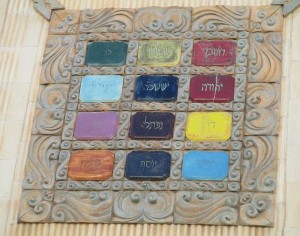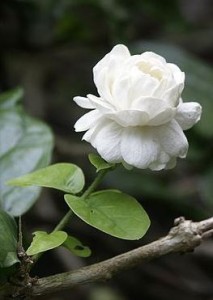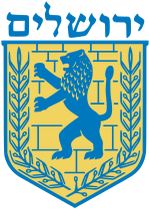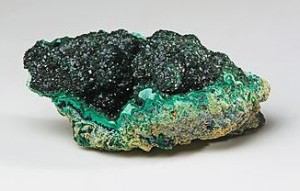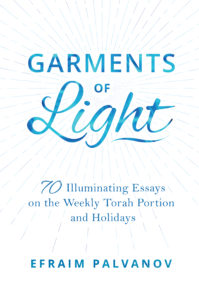Yesterday was my daughter’s birthday, and her favourite thing in the world is unicorns. Perhaps this is because the unicorn makes a hidden appearance in her parasha, this week’s parasha, Vayak’hel-Pekudei. In summarizing the construction of the Mishkan, the Torah notes that it was made with the skins of the tachash (Exodus 35:7). The tachash is a mysterious animal whose true identity is entirely unknown. The Talmud (Shabbat 28b) states that it was a unique mammal species, wild and undomesticated, with a singular horn on its head. It came specifically in the time of Moses to be used for the Mishkan, and has since disappeared. The Talmud goes on to suggest that it was probably the same animal that was brought by Adam as a sacrifice in the Garden of Eden. This ties to another passage in the Talmud (Avodah Zarah 8a) that explains how Adam brought a thanksgiving offering to God, of a unique animal with a single horn, as it states in Psalms 69:32 that “it shall please God better than an ox with horn and hooves.” Elsewhere (Chullin 60a), the Talmud adds that this special animal emerged fully formed, horn-first, from the Earth. The Sages hold that having horn and hooves means it was probably kosher! Continue reading
Tag Archives: Unicorn
Where Was the Garden of Eden?
This week’s parasha, Chayei Sarah, begins with the passing of Sarah, and Abraham’s securing of a burial plot for her. He specifically chooses Me’erat HaMakhpelah, a cave in Hebron, and pays a handsome price for it. Why was this place special and how did Abraham know that this was the right place to lay Sarah? The Zohar (I, 127a) comments that Abraham saw a vision of the Garden of Eden at that spot and, when he entered the cave, found Adam and Eve buried there. The Zohar suggests that this area was once the Garden of Eden!
It would definitely make sense for the Garden of Eden to be in the Holy Land. When Adam and Eve were banished from the Garden, the Torah says they lived east of it (Genesis 3:24). Cain, too, when banished, fled east—and there built the first city (Genesis 4:16-17). Since this city was in Mesopotamia, which is directly east of Israel, the implication is that Eden was in the Holy Land. Israel is called tabur ha’aretz, the “navel of the Earth” (Ezekiel 38:12), and is described in more mystical texts as the very centre of the entire universe, the point of origin of Creation.
Having said that, the Torah also says that Eden was locked up after Adam and Eve’s error, and God placed angels to guard its entrance (Genesis 3:24). What happened between that time and the time that Abraham found it? The only explanation that comes to mind is that Eden was destroyed during the Great Flood. Yet, the Midrash (Beresheet Rabbah 33:6) presents one opinion that the Land of Israel was not affect by the Great Flood! The proof is from Ezekiel 22:24, which says that Israel “was not cleansed, nor rained upon in the day of fury.”
This solves another problem: where did the dove that Noah sent get an olive branch? The Midrash says it got the branch from Israel, which miraculously did not experience the Flood. Some hold that Israel did experience the Flood, just that it did not rain directly upon the Holy Land; water flowed in from surrounding lands. Finally, the Midrash presents an opinion that the dove got the olive branch directly from the Garden of Eden! This suggests Eden was not destroyed by the Flood.
And then there are altogether different opinions regarding the location of Eden. Continue reading
The Stones, Symbols, and Flags of the Twelve Tribes of Israel
Bamidbar is the fourth book of the Torah, and the name of its first parasha. It is known in English as “Numbers”, since it begins with a detailed census of the Jewish population in the wilderness. We are given a description of how the nation was organized in their camps: the tribes of Yehuda, Issachar, and Zevulun were positioned towards the East; Reuven, Shimon, and Gad to the South; Ephraim, Menashe, and Binyamin to the West; and Dan, Asher, and Naphtali to the North. The Levites and kohanim were in the centre. We are told that each of the tribes had their own flag, just as in a large military formation. What did these flags look like? Which colours did they bear, and what symbols graced them?
In an intriguing passage, the Midrash (Bamidbar Rabbah 2:7) provides a summary of the flags’ appearance. It begins by telling us that the colours of the flags corresponded to the colours of the stones that were on the Choshen (or Breastplate) of the High Priest. The High Priest was commanded to wear a special breastplate that had twelve precious stones, one for each of the twelve tribes. Each stone had a symbolic meaning unique to that particular tribe.
Reuven’s was the odem, a ruby, and so his flag was red. The symbol on the flag was the duda’im, flowers that Reuven had picked for his mother Leah (Genesis 30:14). It was on account of these flowers that Leah went on to have three more children. Duda’im is often translated as “mandrakes”, though according to Rashi they were of the Jasmine plant.
Shimon had the pitdah, probably topaz, and his flag was green. The symbol upon the flag was an image of the city of Shechem. This is in memory of the episode where Shimon (together with his younger brother Levi) took up swords to decimate the Shechem population after the abduction and rape of their sister Dinah (Genesis 34).
Levi’s was bareket, possibly an emerald or onyx, and the flag had three bands of colours: white, black, and red. Upon the flag was an image of the Urim V’Tumim, the mystical objects kept within the High Priest’s breastplate that were apparently used for communication with the Divine.
Yehuda had nofech, a stone more difficult to identify, with different opinions holding that it was either red, green, or blue. The Midrash here describes the flag as blue like the skies. Emblazoned upon it was the image of a lion. Before his passing, Jacob blessed each of his twelve sons, and in his blessing, he described Yehuda as a lion (Genesis 49:9). The lion would later become associated with the Davidic dynasty of kings (which hails from the tribe of Yehuda), and with the seat of their throne in Jerusalem, a city that goes by a number of names, including Ariel (“God’s lion”).
Issachar’s was a sapphire (or lapis lazuli) stone, and his flag was of a very dark blue colour. Upon it was the image of the sun and moon. The Midrash explains why, citing I Chronicles 12:33, which describes the people of Issachar as being wise in astronomical and chronological matters.
Zevulun had a yahalom, today’s Hebrew word for diamond, though there may be other possibilities. Zevulun’s flag was white, and bore a depiction of a ship, again based on Jacob’s blessing to the tribe to be successful sea-going merchants, and live along the Israeli coastline (Genesis 49:13).
Dan had leshem, amber, with a flag of a sapphire-like colour (despite the fact that amber is typically golden-red). Upon the flag was the symbol of a snake, once more based on Jacob’s blessing (v. 17). Likewise, Gad’s flag bore the image of a military camp (v. 19), on a black and white background, based on Gad’s stone of shevo, a black agate or obsidian.
Naphtali had achlamah, the purple amethyst. His flag was of a similar colour, described by the Midrash as pure wine that isn’t too strong. It is interesting that the Midrash should compare it to wine, since amethyst was believed in ancient times to keep one sober and prevent drunkenness. Upon the flag was an image of a gazelle, also from Jacob’s blessing (v. 21).
Asher’s stone of tarshish is certainly the least identifiable of the dozen. Opinions range from chrysolite and coal to flint and hyacinth. The Midrash doesn’t help in clarifying the matter, describing the flag as similar to the colour of an expensive jewel stone worn by women. Whatever the case, the image upon the flag was that of an olive tree, since Jacob blessed Asher with fatty riches and delicacies (v. 20).
In the encampment, the tribes of Ephraim and Menashe were counted separately. On the breastplate, however, they were counted as one, under the banner of their father Yosef. This is because Ephraim and Menashe were not Jacob’s sons, but his grandsons, and on his deathbed, Jacob elevated their status to that of his own sons. Thus, we always maintain that there are twelve tribes: if we include the priestly Levites in the count, then Ephraim and Menashe are combined into one, Yosef, to ensure twelve. If we do not include the Levites since, after all, they are in a different class (and did not inherit any land for that matter), Ephraim and Menashe are counted independently of each other.
The stone of Yosef was shoham, which also has a number of opinions to its identity. The Midrash tells us that the flag was black, which supports the suggestion that shoham is malachite, a stone that has dark green and black colours. Ephraim’s black flag had a bull depicted on it. This is drawn from Moses’ final blessing to the tribes of Yosef (Deuteronomy 33:17), which the Midrash quotes. (Jacob’s blessing also mentions the word for a bull, but it is translated differently there.) The Midrash also tells us that the bull represents Joshua, who was of the tribe of Ephraim.
Based on the same verse in Moses’ blessing, Menashe’s black flag had a re’em, a horned animal sometimes translated as a unicorn, or perhaps an ox or even a rhinoceros. Again, the Midrash points out that this represented the Biblical judge Gideon, who was of the tribe of Menashe.

Last but not least, Binyamin’s flag famously depicted a wolf, based on Jacob’s description (Genesis 49:27). The stone of Binyamin was the yashfe, another unidentified one. The Midrash tells us that Binyamin’s flag had a mix of the colours of all the other tribal flags. This is likely due to the fact that Binyamin was the beloved little brother of the family, and all of his older siblings, though sometimes at odds with one another, always united to protect him. It is said that this is the reason why the Holy of Holies in the Temple was specifically in the territory of Binyamin (while the rest of the Temple was in the land of Yehuda), since the whole nation put aside their differences and united as one when it came to the smallest of their brothers.
This is an excerpt from Garments of Light: 70 Illuminating Essays on the Weekly Torah Portion and Holidays. Click here to get the book!

